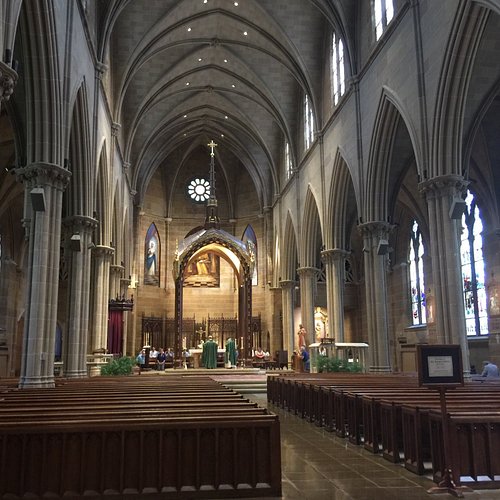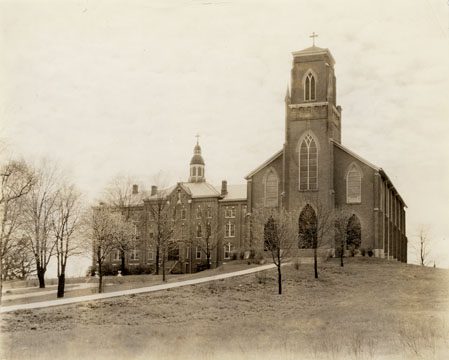Logan Ohio Churches: A Tour into the Different Religious Groups and Service Types
Logan Ohio Churches: A Tour into the Different Religious Groups and Service Types
Blog Article
Checking Out Historical and Modern Churches for All Confidences
The expedition of historic and modern churches functions as a profound lens whereby we can check out the advancement of faith and community dynamics across cultures. From the elaborate styles of ancient basilicas to the minimal aesthetic appeals of modern prayer spaces, these structures encapsulate the essence of their time and location. They are not simply churches; they are reflections of cumulative desires and social worths. As we think about the relevance of these spiritual sites, one must ponder how they remain to form interfaith discussion and neighborhood interaction in today's diverse world.
Building Designs With the Ages
As building expressions of spirituality, churches have actually developed substantially over the centuries, reflecting the varied theological and social influences of their times - Logan Ohio Churches. The building styles of churches are as differed as the belief systems they stand for, each style personifying certain religious teachings and community worths
Early Christian design emerged from Roman basilicas, identified by easy, longitudinal frameworks featuring a nave and aisles. As the Center Ages progressed, Gothic style took hold, noted by pointed arches, ribbed safes, and flying buttresses, which enabled for larger stained glass windows that brightened interiors with magnificent light. The Renaissance period brought a resurgence of timeless elements, stressing proportion and balance, while Baroque architecture introduced remarkable forms and sophisticated details, personifying the splendour of spirituality.
In the 20th and 19th centuries, the surge of various motions, such as Crafts and arts and Modernism, reflected societal adjustments and a departure from conventional types. Today, modern churches typically mix cutting-edge layouts and modern-day materials, embracing sustainability and neighborhood interaction. This abundant tapestry of building designs illustrates the ongoing discussion between belief and style, showcasing just how churches continue to adapt to the spiritual requirements of varied populaces across the globe.
Famous Historic Churches

An additional impressive example is the Notre-Dame Sanctuary in Paris, commemorated for its French Gothic design. Its complex appearance and sensational tarnished glass home windows reflect centuries of commitment and creativity, making it an icon of both confidence and resilience, especially after its recent reconstruction following the devastating fire in 2019.
In the Americas, the historic Objective San Juan Capistrano in California showcases Spanish colonial design, highlighting the very early Catholic goals that played a crucial duty in the area's social development.

Furthermore, the Hagia Sophia in Istanbul, originally built as a basilica, stands for a mix of Christian and Islamic heritage, showcasing the abundant tapestry of background that churches often embody. Each of these historic churches not only works as a place of worship however additionally as a cultural site, protecting the stories of diverse neighborhoods throughout time.
Modern Church Innovations
Modern churches are progressively accepting ingenious styles and innovations to improve the praise experience and foster community engagement. These innovations manifest in numerous types, from architectural developments to digital assimilation. Several modern churches feature open, flexible rooms that can be quickly reconfigured to read review accommodate diverse tasks, such as solutions, social events, and curricula.
Including modern technology is vital in contemporary church design. High-grade audio-visual systems, real-time streaming abilities, and interactive displays permit parishes to connect not just within their walls yet likewise with a broader target market online. This digital outreach has come to be necessary for maintaining area ties, especially in an age where many people seek spiritual connections past standard settings.
Sustainable layout methods additionally play a critical role in modern-day church developments. Several institutions are selecting green materials and sustainable power sources, showing a commitment to environmental stewardship that reverberates with congregants.
Moreover, the combination of art and creative thinking into praise rooms, through multimedia, murals, and installations presentations, offers to enhance the spiritual ambience, making the experience more immersive. These advancements jointly reflect a shift towards a much more comprehensive and dynamic technique to prayer and area life.
Community Effect of Churches
Churches play a vital role in shaping and uplifting communities, frequently stepping up to address local needs and challenges. Past their spiritual features, these establishments often participate in social outreach and provide important services that cultivate community cohesion. Many churches run food financial institutions, sanctuaries, and counseling services, addressing issues such as destitution, being homeless, and mental health.
Moreover, churches frequently offer as meeting place for community occasions, assisting in dialogue and unity among varied groups. By hosting instructional programs, workshops, and social events, they urge individual growth and cumulative empowerment. Their interaction in local campaigning for efforts amplifies the voices of marginalized areas, adding to social justice initiatives.
In addition, churches typically collaborate with neighborhood organizations, boosting their effect through collaborations that combine sources and know-how. This interconnectedness strengthens area ties and advertises a sense of belonging amongst locals.
In significance, churches are not merely churches; they are important to the social my explanation fabric of their areas. Their diverse payments-- spiritual assistance, social solutions, and community advocacy-- play a vital role in promoting strength and positive adjustment within society.
Checking Out Churches Around the World
When checking out the varied landscapes of spirituality, going to churches around the globe offers a special home window into the cultural and imaginative expressions of belief. Each church functions as a testament to the history and values of the area it stands for, reflecting architectural styles and regional practices.
From the grandeur of St - Logan Ohio Churches. Peter's Basilica in Vatican City to the minimalist appeal of Tokyo's St. Mary's Sanctuary, these spiritual spaces embody a rich tapestry of human experience. The intricate stained glass of Chartres Cathedral in France narrates biblical stories, while the lively murals of the Ethiopian Orthodox churches show the country's distinctive spiritual heritage
In addition to showcasing artistic mastery, churches typically function as facilities of area and social involvement, organizing occasions that reinforce bonds amongst congregants. Several additionally use chances for interfaith dialogue, promoting understanding and respect among different idea systems.
Taking a trip to these churches permits site visitors to value the universal themes of hope, love, and compassion that transcend cultural obstacles. Whether one understands a certain confidence or otherwise, the experience of checking out these spiritual sites enriches our understanding of the human mission for definition and link.
Verdict

The expedition of contemporary and historic churches serves as a profound lens via which we more information can examine the evolution of confidence and area dynamics across cultures. Today, modern churches often mix innovative layouts and modern-day products, accepting sustainability and community engagement.Throughout background, many churches have emerged as legendary spots, each telling a special story of creativity, neighborhood, and faith.Modern churches are progressively embracing cutting-edge designs and technologies to boost the prayer experience and foster neighborhood engagement.In addition, churches commonly serve as celebration locations for area events, promoting dialogue and unity amongst diverse teams.
Report this page